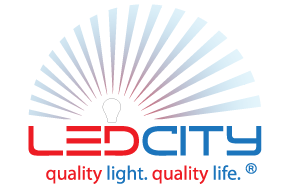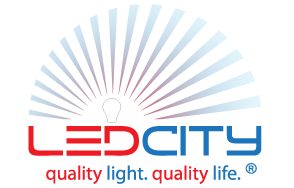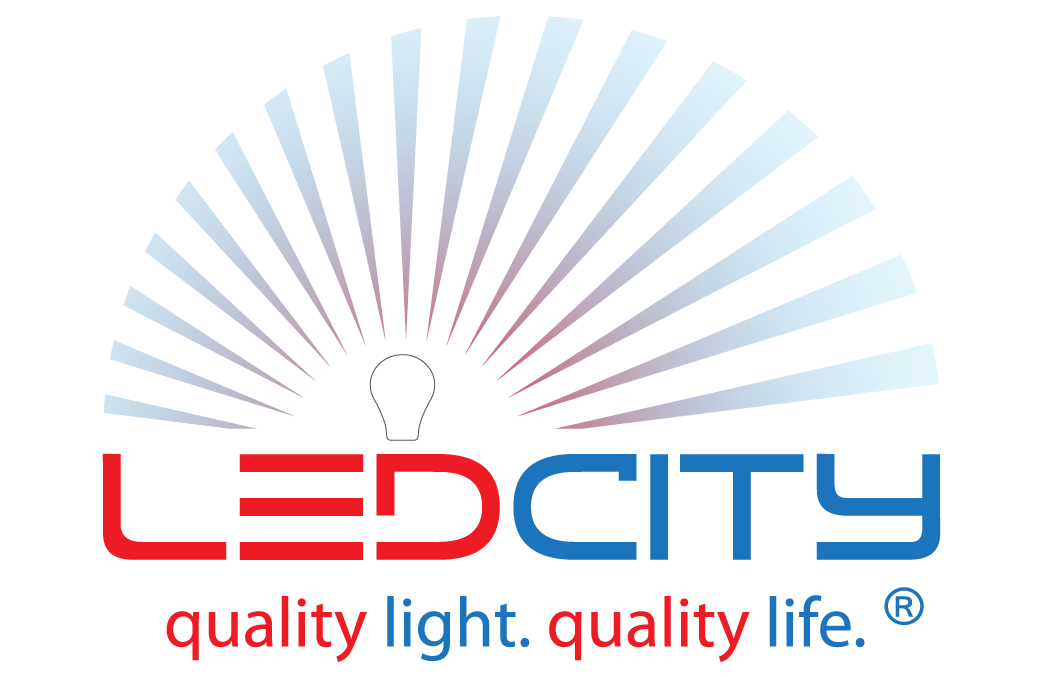LED Buying Guide

Choosing the right LED product and/or system isn’t always an easy task. With so many different products, systems, and brands on the market, chances are you might not be able to find the most suitable lighting products to achieve your renovation or business goals. Good lighting isn’t just a case of providing illumination but also transforming mood and atmosphere of the space, whether it is at home, office, factory or retail premises. Each project and installation will come with its own unique requirements and challenges, and should be tackled accordingly.
This guide will help you to make the correct and the best decision which will result in you having the perfect light installation tailored to your exact needs.
When buying LED lighting products or systems, there are six (6) things you should always take into account:
1. Where do you need LED lighting?
2. What are your lighting objectives?
6. Glossary - LED and basic lighting terms you need to know
1. Where do you need LED Lighting?
Lighting is everywhere, every building, shop, restaurant, and street. But every single application has very different requirements, and that is where LED lighting comes into its own. It is the most versatile type of lighting available. So which applications have what specific requirements?
Offices

Not only is the right lighting essential for a happy, productive and healthy workforce, the lighting levels in offices are governed by legislation - you need to ensure that the right amount of light reaches the required spaces. Another huge factor when it comes to providing lighting in offices is both the energy efficiency and environmental concerns. LED lighting is by far the most efficient available, and can reduce your running costs by at least 50% compared with traditional lighting installations.
Retail

Besides energy efficiency, a major requirement of lighting in retail premises and showrooms is the quality of the light. Not only does the lighting need to create a pleasant and positive experience for the customer, it needs to display the products and stock in the best way possible. In addition, LED lighting does not produce the potentially damaging UV and IR (ultraviolet and infra-red) light, ensuring that your goods do not colour or fade, and remain looking their best.
Hotels / Restaurants

The lighting needs for hotels, bars, cafes, and restaurants can be very demanding, and specific. The correct lighting is essential in order to create the right ambience and atmosphere. Here the wide range of different options and its sheer flexibility and versatility means that LED lighting stands head and shoulders above traditional lighting methods.
Home

Of course, lighting in the home is something we can’t live without, but each room has its own specific requirements. The light in the kitchen, for example, needs to be a lot brighter and sharper than you would need in the living room, where a more relaxed and comforting light is preferred. Lighting installations in bathrooms need to be waterproof, while dimming might be a good option in the bedroom. Therefore, when deciding on lighting options for your home, each room should be considered separately.
Industrial (e.g. stores, factories)

Having the right lighting exactly where you need it is never more important than in factories and industrial applications. Here safety (the right lighting levels), productivity (the right type of lighting) and cost saving (energy efficiency and easy maintenance) are the main requirements.
Others

Due to the robust and versatile nature of LED lighting, they can be used anywhere and everywhere that you need lighting. Carparks, tennis courts, streets, plazas and security lights are just a handful of other applications where LED lights are used successfully.
2. What are your lighting objectives?
Lighting offers so much more than simply illuminating a space, room or interior. The type of lighting used in an installation will have a huge effect on the atmosphere, mood, perceived temperature and general look of the area it illuminates. It is important to know beforehand what the objective of an installation is so you can match the correct lighting method.
General Lighting
This is where you require a uniform level of illumination, quite often, but not always, over a relatively large area. The emphasis is to provide a good all-round distribution of light, with minimal shadows. Rather than designed to enhance the appearance and atmosphere of the room, general lighting is more concerned with ensuring the objects and areas in question are suitably well-lit.

Task Lighting
Task lighting targets specific areas for illumination, such as worktops, desks, and counters. Use of task lighting means there is less reliance on general lighting, concentrating instead on those areas that need to have high-quality light. Task lights tend to be directional, and location specific.

Accent Lighting
This is where you need to highlight a specific area, item or feature within an already lit space. For example, if you need to bring people’s attention to a special offer in a showroom or shop, or want to highlight an exhibit in a gallery or museum. This method of lighting provides extra illumination without creating shadows or too much contrast in brightness.

Decorative / Ambient Lighting
Decorative / ambient lighting is used not so much to illuminate an area or room, but more to create a mood, atmosphere – or ambience. Decorative lighting can be a stand-alone lighting installation, but more often than not, it is created using a combination of all other types of lighting, to create a unique and specific ambience.

Architectural lighting
The aim for this type of lighting is to highlight and accentuate the integral features of the room or space being lit, as opposed to its contents. Lighting installations designed for architectural lighting usually produce low levels of illumination and are often chosen for their appearance, which should complement the walls or features they are on and/or are lighting.

3. Types of Installations
There are many different types of LED lights and LED installations available. Many are specifically designed to either provide a certain type of light, to perform a particular task, or to be fitted in a certain place or environment. Before deciding on a product, customers need to be aware of the materials it will be installed into, the environment and conditions the installation will be subjected to, as well as several other factors. For example, if your lights are to be installed in a high ceiling (anything over 3 metres), any maintenance required including the changing of the lights will be a longer and more expensive procedure, as scaffolding will more than likely be needed. The far superior life of LED lights over traditional types is something that should definitely be taken into account when fitting light installations in high ceilings. Other circumstances to consider include:
- Concrete ceilings
- False ceilings
- Surface walls
- Embedded walls
- Cabinets
- Bathrooms
- Outdoor
- Underwater etc.

4. Types of LED Lights
Downlights
These are mainly used for general lighting (sometimes also used for accent lighting) in domestic installations, and they come with a variety of fittings to match your rooms’ décor (for example, downlights come in both surface and recessed installations). LED downlights are available in different colours, sizes and outputs so you can create your desired ambience for each room.
LED downlights produce a fraction of the heat of traditional halogen bulbs, so as well as energy saving, that is another advantage that should be taken into account, especially if you have low ceilings. LED downlights come in a range of colour temperature, including different types of white - cool white (6000K) for a dentist surgery, for example, neutral white for an office (4000K), and a warm white (3000K) which is often chosen for living rooms and bedrooms in homes.

Spotlights
These are typically used for accent lighting - for example in retail shops and showrooms, or in any situation where the main requirement is a strongly targeted light with high CRI to show the true and vivid colours of the products, artworks, or architectural elements that are of interest.
Spotlights can also be used to create an additional layer of light, or as part of the overall lighting in a room, to create a specific ambience, or to highlight specific features or areas.
Spotlights can be either surface mounted or recessed mounted, and if a track system is used, spotlights can be moved to provide more targeted light, as and where it is needed.

Track lights
These are comprised of a length of the track holding a number of spotlights. Each light can be moved and positioned to suit your particular installation. Track lights are used for task or accent lighting, where you have a larger area that needs illuminating, and they are especially popular in showrooms and product displays.
One of the main advantages of track lights is that the power is supplied through a pair of steel wires that run inside the track itself. This means that not only does each individual light not need its own power source, but it makes it a lot easier and quicker to install and replace. Another beauty of this type of fitting is that they provide a line of lights – in turn creating a strong illumination – within a limited space, once again meaning they are ideal for retail displays.
Track lights can be tailor made for your particular requirements, adding extra length (and lights) to ensure full coverage.

Wall lights
Depending on the product types and where they are positioned, wall lights can be used for ambient, general, and/or task lighting. A great wall lighting design will improve the appearance of colours and furnishings, and it will also help you look and feel better in your space. In most applications, wall lights are used for ambient lighting (normally installed high on the wall), to create a soft and relax environment, while at the same time provides a space with overall, general illumination so that you can see and move around safely.
When installed outdoor, wall lights should allow for safe movement by identifying uneven surfaces and other hazards. Outdoor wall lights should also provide soft, non-glaring light to help you discern between wanted and unwanted visitors, and help identify your home for guests and/or emergency personnel.

Panel lights
Chiefly used in offices, classrooms, libraries, and hospitals, LED panel lights provide high-quality, low-cost general lighting. They work well with both concrete and false ceilings, and due to their large size, are particularly good at distributing lights evenly over a wide area. Panel lights can be supplemented by more targeted spot lights to create greater illumination in specific areas if needed.

Pendant lights
In the past, home builders often add one ceiling fixture in the middle of a room and call it finished. Pendant lights can help to break that monotony with style, and one of the best things about them is they don’t leave a “footprint” or take up valuable tabletop space.
Pendants provide a soft and non-glaring task lighting. With many different types of decorative designs, pendant lights add an unexpected twist to your rooms with a modern look and feel. Another important feature for larger homes is that pendant lighting can be used to bridge high ceilings, which not only make the light more accessible, but it brings the light down to where the guests are.

Strips
These are a very versatile option, providing general lighting in areas where it is hard to fit traditional light installations. High ceilings and dark corners are popular areas for strip lights, as well as being used to highlight certain architectural features of rooms or buildings. Strips are a good choice for displaying products, particularly ones that are fixed within a counter – for example, watches and jewellery. They are also often used to run up stairways and are available fully waterproofed for use outdoors.

Retrofit (bulbs, lamps, and tubes)
Instead of changing and redesigning the whole installation, retrofitting is the easiest and cheapest way to upgrade your light fittings. Retrofit kits come with everything you need to turn your existing lights over to LED installations, and involves very little wiring (though employing an electrician is advised if you are in any doubt about what to do).

5. Quality and Assurance
One of the most common issues when buying LED lights is due to the market being flooded with “low cost”, poor quality and non-branded products. Though it might be tempting to go for the cheap option, it is more often than not the case that it will cost you more money in the long run. This is because these products are very likely to require more maintenance, will have a reduced shelf life and even worse could pose a genuine safety risk. Many of these types of products also do not come with a guarantee or warranty. Like all electrical products, it is far better to go for a brand you know and trust. This gives you the peace of mind that it is far less likely to go wrong, and if it does - you are covered.
At LEDCITY, every single product we sell comes with a 3-year warranty, as well as a 14-day risk-free, money-back guarantee. Added to that, we also offer free shipping and attractive discounts for bulk orders.
6. Glossary - LED and Basic Lighting Terms you need to Know
Lumens
The measurement of the total amount of light emitted from the light fitting - the higher the lumens, the brighter the light.
Lux
The amount of lumens in a specific area, in other words, light intensity. Lux and lumens are different because we use lumens to compare the total amount of output from a light fitting, while use lux to measure the light intensity, where one lux is equal to one lumen per square meter.
1 lux = 1 lumen/m²
Watts
The amount of power a light fitting consumes (power consumption). When dealing with traditional lights, this is also used to determine the brightness, but this isn’t the case when dealing with LED lights where Lumen is used. Different LED lights with the same wattage will produce different Lumen levels, so always go by Lumen rather than the wattage when planning your installation.
Lumens Per Watt (LPW)
The more power a light fitting consumes, the more lumens it should produce. However, that’s not always the case. Lumens Per Watt (lumens divided by watts) is introduced to determine a light’s efficiency - the higher the number, the more efficient the light.
Correlated Colour Temperature (CCT)
The measure of light’s colour in Kelvin (K) degrees. There are many different definitions of colour temperature used in the lighting industry, some are even contradicting. And here at LEDCITY, we define outputs of 2600K to 3700K as “warm white” (more yellow or red), 3700K to 5000K as “neutral white”, and “5000K to 8300K as “cool white” or “daylight” (more blue). Studies have shown that light colour affects our daily sleep cycles and mood. Cooler colours promote wakefulness and productivity, while warmer colours tend to promote relaxation. In retail industries, retailers tend to use cooler colours for mental or hardware products while use warmer colours for food and clothing.
A tip is to stick to just one colour throughout an open area, as otherwise, the mixing of colours could be distracting to the eyes.
Colour Rendering Index (CRI)
The Colour Rendering Index (CRI or also denoted as Ra) is a measure of light’s ability to properly render colour (ranges from 0 to 100 - the highest possible score). Colour rendering is important especially for commercial applications in order to reveal true and vivid colours of the products, artworks or architectural elements that are of interest.
The following table shows the quality of Colour Rendering Index:
Ra = 90 - 100 Excellent
Ra = 80 - 90 Good
Ra = 60 - 80 Moderate
Ra < 60 Poor
Beam Angle
The angle of which a light is emitted. Smaller beam angles will have an intense hot spot, whereas larger beam angels will have a lesser intensity. Spotlights have smaller beam angles so light is more focused compared with other light fittings.
Power Factor
Power factor is the ratio of output against input of an AC circuit - the measure of electrical power efficiency. In lighting industry, power factor also means how much power is wasted by a light fitting and/or its driver. A power factor of 1 means no power is wasted while a power factor of 0.5 means half of the power is wasted in heat rather than converted to light.
Flickering
LED light fittings are connected to AC power (through internal or external LED driver) and flickering could occur as a result of voltage ripple from the AC power.
Glare and UGR (Unified Glare Rating)
Glare is over excessive brightness that can be uncomfortable to look at, and it typically results from any small light source that emits a high lumen output. Glare is a measurable phenomenon, which is determined using a formula. To measure glare, we use the Unified Glare Rating (UGR), which is the luminance of the light source divided by the background luminance of the room. The UGR ranges from 5 to 40, with a lower number being desirable because it represents less glare.
To avoid glare, you should think about where you’re placing the fixture, and use light fittings that come with fewer high-output LEDs or have a large number of evenly spread lower-output LEDs.
IP Rating
All IP Ratings have two numbers. The first number (0-6) refers to protection against solid objects, while the second number (0-8) refers to protection against liquid objects. A fully waterproof LED lighting product will have a score of IP68, which means it can be submerged into water for indefinite periods of time.









